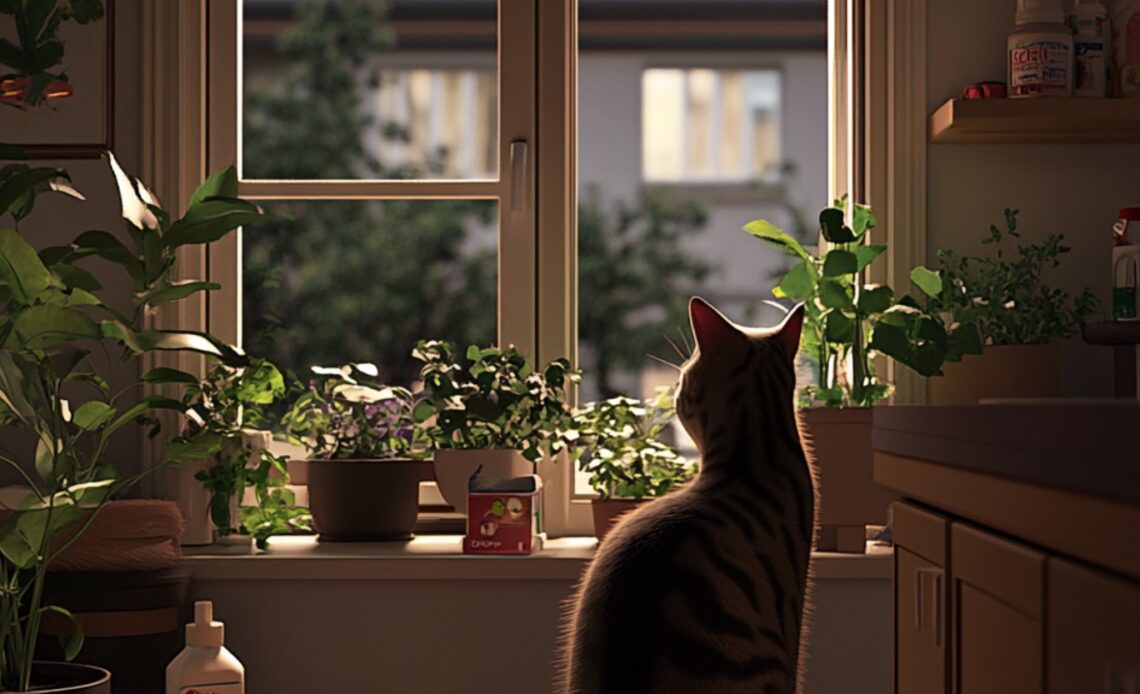
Cats bring joy, companionship, and calm to any home. Their inquisitive nature, however, means that ensuring their safety requires thoughtful attention. From indoor hazards to outdoor risks, safeguarding your feline companion involves a combination of preparation and vigilance. Below, you’ll find a detailed guide to keeping your cat safe, healthy, and happy.
1. Indoor Safety Measures: Creating a Secure Home Environment
A cat’s curiosity knows no bounds, which is why it’s vital to evaluate your indoor space for potential dangers. Cats are naturally drawn to high spaces, small openings, and the warmth of various appliances. Ensure that windows are securely closed or equipped with sturdy screens to prevent accidental falls, especially in multi-story homes. Avoid leaving small objects or string-like materials—such as rubber bands, hair ties, and sewing threads—within reach, as these can lead to choking or digestive blockages if ingested.
Household plants also pose a hidden threat. Lilies, philodendrons, and poinsettias, for example, are highly toxic to cats. Research all plants within your home to ensure none are harmful. When possible, opt for cat-safe greenery, such as spider plants or Boston ferns.
2. Managing Food Hazards: Understanding What’s Safe and What’s Not
Cats are obligate carnivores with specific dietary needs, and human foods are often unsuitable or outright dangerous for them. Chocolate, onions, garlic, alcohol, and certain artificial sweeteners like xylitol are toxic to cats. Even seemingly harmless foods, like grapes or dairy, can cause digestive distress or worse.
Keep food out of your cat’s reach, especially during meal prep or dining times. Familiarize yourself with foods that are safe for occasional treats—such as small portions of cooked meat or fish—and avoid processed human foods. Store cat food in a secure location and always keep fresh water available to prevent dehydration.
3. Protecting Cats Outdoors: Reducing Risks in the Great Outdoors
While some cats are strictly indoor pets, others enjoy limited outdoor access. If your cat roams outside, consider supervised outings or a secured “catio” (an enclosed outdoor space) to let them safely explore their environment. Unsupervised outdoor access comes with many risks, including traffic accidents, encounters with other animals, and exposure to harmful chemicals.
Outdoor cats should be microchipped and wear a collar with identification tags. Regular vaccinations and flea/tick preventatives are essential for keeping your cat protected from diseases and parasites. If you’re hesitant to allow outdoor access, try leash training with a comfortable harness—this gives your cat the freedom to explore without wandering too far from home.
4. Identifying Common Household Toxins: Knowing What to Avoid
Beyond foods and plants, household chemicals and medications can be perilous for cats. Common cleaning supplies, such as bleach, disinfectants, and even essential oils, can cause respiratory issues or poisoning. Cats are sensitive to strong fragrances, so avoid using highly perfumed cleaning agents where they roam.
Store cleaning products and medications in locked cabinets, and never leave open bottles or containers unattended. Consider switching to cat-safe alternatives, especially for floor cleaners and surface sprays. Being mindful of these hazards will create a healthier environment for your feline companion.
5. Emergency Preparedness: Knowing How to Respond in a Crisis
No one wants to imagine their pet in danger, but preparedness can make a difference when seconds matter. Familiarize yourself with the nearest 24-hour veterinary clinic and keep their contact information readily available. Assemble a basic first-aid kit for your cat, including items like gauze, adhesive bandages, antiseptic wipes, and styptic powder.
Learn the signs of common emergencies, such as choking, poisoning, or injury, so you can act quickly and calmly. Training yourself to gently restrain your cat can also help in administering first aid if necessary. Consider taking a pet first-aid course to build confidence in handling emergency situations.
6. Vet Visits and Regular Health Checkups: Prioritizing Preventative Care
Regular veterinary visits are key to catching potential health issues before they escalate. Cats are notorious for masking pain, making it challenging for even the most attentive pet owners to notice early signs of illness. Routine checkups provide an opportunity to monitor your cat’s weight, dental health, and overall condition.
Stay up-to-date on vaccinations, as well as flea, tick, and worm preventatives, especially if your cat spends any time outdoors. Senior cats may require more frequent visits to monitor for age-related conditions. Investing in preventative care not only prolongs your cat’s life but also ensures a better quality of life for them.
7. Mental and Physical Stimulation: Keeping Your Cat Happy and Engaged
Mental and physical engagement is a crucial component of your cat’s well-being. Boredom and lack of exercise can lead to behavioral issues or depression. Engage your cat with interactive toys, puzzle feeders, and scratching posts to fulfill their natural instincts for hunting and climbing.
Set aside time each day to play with your cat, as this not only provides exercise but strengthens your bond. Window perches and cat trees also offer enrichment and help your cat burn off energy. Remember, a stimulated and content cat is far less likely to engage in risky or destructive behaviors.
Conclusion
Ensuring your cat’s safety involves more than just basic care. It’s about crafting a space where they can explore, play, and rest without hidden dangers. From understanding the risks of certain foods and plants to preparing for emergencies, every action you take is a step toward a happier, healthier life for your feline friend. By implementing these safety measures, you can give your cat the best chance at a long and fulfilling life, knowing they’re protected and cherished in every way.

